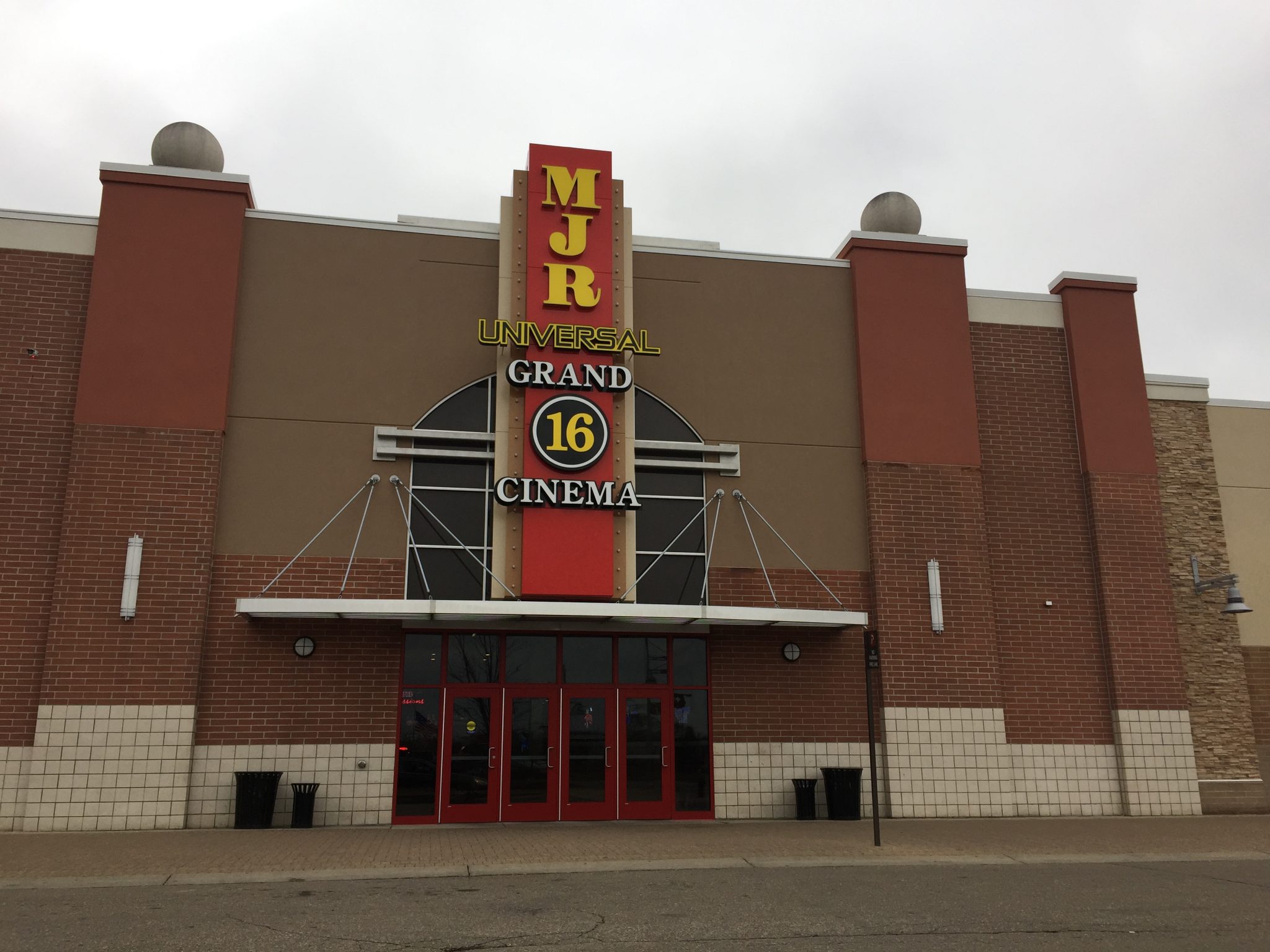WDET EXCLUSIVE: The Origin of the MJR Clap
Finally, some answers to where this pre-movie clap came from.

Some moviegoers will clap after a really good film. At MJR, a Southeast Michigan theater chain with ten locations, patrons clap before the movie.
This bout of audience participation happens during a trailer for the theater that reminds moviegoers not to talk or text during the show. Right after a singer belts, “It’s more than just a movie, it’s a big night out!” some audience members clap three times in a row. This happens two separate times during the song.
If you’ve been to an MJR theatre, you likely have heard this clap. It’s been happening for more than a decade. But you probably don’t know where the MJR clap came from. It’s a mystery even to MJR.
“I can’t tell you when it was or where it was,” says MJR Theaters Founder and CEO Michael Mihalich.
While the clap’s origins have been undocumented, the song that people clap to today was released in 2001.
“The song was very popular to begin with. But then the clapping just started and somehow spread from one location to the other,” says Mihalich.
Looking for answers, WDET put out a call to theatergoers asking for information on this local phenomena. We got an overwhelming response on Facebook and in voicemails. Clearly this is something metro Detroiters are interested in. Keep reading to find out what we discovered. Or click on the audio player at the top of this page to listen.
Support the news you love.
Here at WDET, we strive to make our journalism accessible to everyone. As a non-profit public media institution, we maintain our journalistic integrity through independent support from readers like you. Because you value WDET as your source of news, music, and conversation, please make a gift of support today. Even $5 a month helps!
People Who Started the Clap
“The song, I felt, was just begging for a clap,” says Christopher Hemler.
In 2005, he was at the MJR theater in Sterling Heights with his then girlfriend, now wife. At the time, he had never heard anyone clap.
“When the time for the clap came, I kind of just clapped on her thigh in excitement,” he says.
That evolved into a full-blown hand clap.
“And when my friends would come to the movies with us, they would start doing it and then, you know, other people in the theater were doing it. And then entire theaters were doing it.”
“It was a great ice-breaker at parties, that I invented the MJR clap,” says Hemler
But then, Hemler met someone who said they’d seen moviegoers clapping at the Chesterfield MJR prior to when he started clapping in Sterling Heights. So, now he sees his role differently.
“I kind of independently created it separately not knowing that it already existed which isn’t as cool of an icebreaker at parties.”
There are others like Hemler.
Karl Grobson says he began clapping at the Brighton MJR in 2001 to embarrass his wife.
“Every now and then I’d get somebody to join me on the second clap. But there was only one or two people here or there,” says Grobson. “But it must have been a good year, at least, before I had even a small portion of the theater clapping with me.”
As for why he decided to clap on those three notes, rather than throughout the whole song, Grobson related it to the way that people sing along to Neil Diamond’s “Sweet Caroline.”
Another MJR patron, Doug Pettigrew, says he started clapping at movies with his now-wife just to “horse around and be an idiot.”
“Once it got to the point where everyone in the theater would do it I’d be like ‘This is my legacy I’m passing on to people.’ And we would joke around about it,” says Pettigrew.
We also heard back from Jacqueline DuPuy, a mom who started clapping a little later than these guys, as well as a couple of people who felt like they started the clap but that they didn’t want to be known for it.
So who should be credited with having started the MJR clap?
First of all, while the folks we heard from may be legends among friends and family, no one says they were confident claiming to be the one and only person to start the clap. They felt like they had conceived of it on their own but they recognized there might have been others, too.
What Experts Say
Mark Lemley, a Stanford professor who teaches intellectual property law says inventions like the telephone, lasers and calculus were independently created by multiple people around the same time.
“But science is a little bit easier to explain than this, I think, because there is only one calculus. You’re figuring it out but it’s not as though you’re just creating it out of whole cloth,” says Lemley.
Behavioral Scientist Dr. Robert Cialdini, a professor at Arizona State University, thinks it’s more likely that the early clappers were responding to something that they weren’t even aware of.
“For example, there is research that shows if wine shoppers go into a wine shop where the manager is playing French music, they’re more likely to buy a French vintage,” says Cialdini. “And they never recognize it, that that unconscious response is what drove their behavior.”
If Cialdini’s right – then what’s the “French music” in this equation? What unconscious nudge may have influenced these moviegoers to clap?
While reporting this story, I found a possible answer where I wasn’t expecting it: WDET’s IT guy, Ryan Carlson.
It Was Ushered In
“I think our group of ushers started the clap,” says Carlson, whose full title is Senior Systems Administrator. He casually mentioned this to me in our newsroom when I was talking about the story.
When Carlson was a teenager, he worked at the Southgate MJR. Once the song came out, Carlson estimates he and the other ushers heard it up to 50 times a shift. At some point, some of them started to clap to it. At first, Carlson says, his buddies would do it out of sight, off to the sides.
“They did it to just to do it without people knowing that they were there and surprise people like ‘where’s that coming from?’”
But then it evolved.
“One guy had the urge to start doing it in front of people. So he would go into the larger theaters and kind of walk across the main aisle way in between the top section and the bottom section. He would time it so that as he was walking through, it would come to that part, and he would just clap as he was walking through and then he would just go out the other side,” recalls Carlson.
“A group of us just started randomly doing it when we would be in different theaters. And that’s how I think it started.”
Carlson, however, is hesitant to claim that this is definitely where the MJR clap came from. But he says he never saw any patrons do it before the ushers.
So, maybe clap initiators unconsciously heard these ushers clapping and it triggered them to do it, too. Or maybe what influenced the patrons is the same thing that influenced the ushers: the music itself.
“Because there’s almost a clapping in the song, right? It’s that bang bang bang!” says Carlson.
Put A Punch In It
Dr. Erin Krupka, an experimental behavioral economist who teaches at the University of Michigan School of Information, says it would be conceivable for multiple individuals to clap on their own if the music mimicked other familiar tunes that involve clapping.
“For example, lots of people might spontaneously think to clap along if they heard any variation of the Addams Family,” she says.
So, let’s talk about the music.
It was developed by Lansing-based company now known as Harvest Creative Services. The song was a team effort – Mark Bucchare sang the lead vocals, Mark Miller, a co-owner of Harvest Creative Services, produced the song and Julie Miller, a composer there, wrote it.
Miller says, at first the song didn’t include any kind of a break.
“It just all rolled together. And we talked about it and we thought ‘You know, let’s just put a punch in it. Because it’s supposed to be a fun, exciting song. Let’s just go “Bomp, bomp, bomp!’”
They didn’t realize at the time what the impact would be of adding those three notes.
“We had no idea people were gonna clap to that.”
We may never definitively know who was the first person to clap in each of the MJR theaters. But what we know for sure is, people wouldn’t clap on these three notes, if those three notes didn’t exist.
